The Gibran Sculpture Series
I’ve had a great response to the photos from the foundry, so I thought I’d let you see some more. These photos show you the amazing skill, but also the huge amount of work, that goes into the making of these fine art bronze sculptures. Sometimes I think we sculptors have it easy!
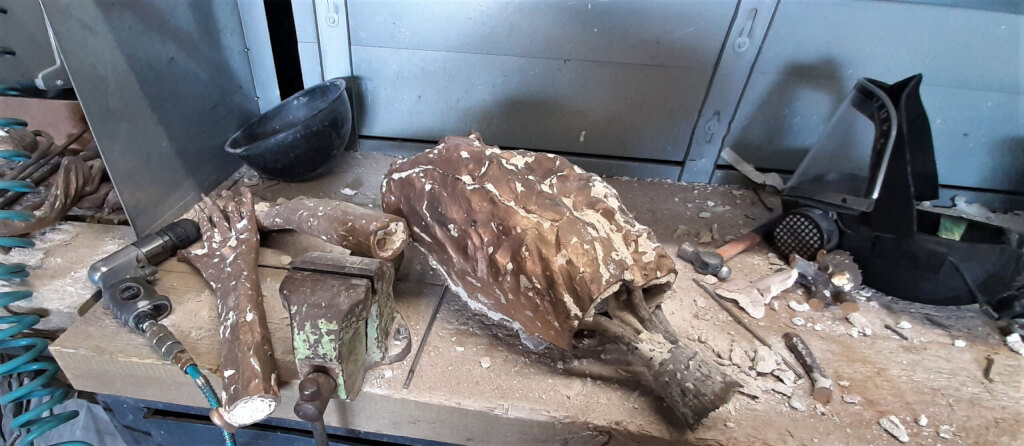
Some of the components of Speak to us of Freedom on a workbench in the workshop.
What on earth am I looking at?
To the left, there’s a compressed-air drill which is connected to a spiral supply hose. That’s used for cleaning. Next to that is a vice, mounted to the bench. Round the vice are the cast bronze components. They have been removed from their moulds, but they still have bits of white clay mould attached to them.
As well as the bits of investment material, they still have the solidified bronze casting runners and pouring funnels attached. These are used in the casting process to get the molten metal where it needs to be.
Then there are two bronze forearms, including hands. They still have the white investment material inside. The arms on the original sculpture are solid of course, but are designed to be hollow when they’re turned into bronze. To make them hollow, the mould has to be filled with something else before the molten bronze is poured, otherwise they won’t be hollow! Clay investment material is what is used, and that stays there until such time as it’s removed.
Next, these cast bronze components need to be cleaned before anything else can be done to them.
The individual components
A section of skirt…
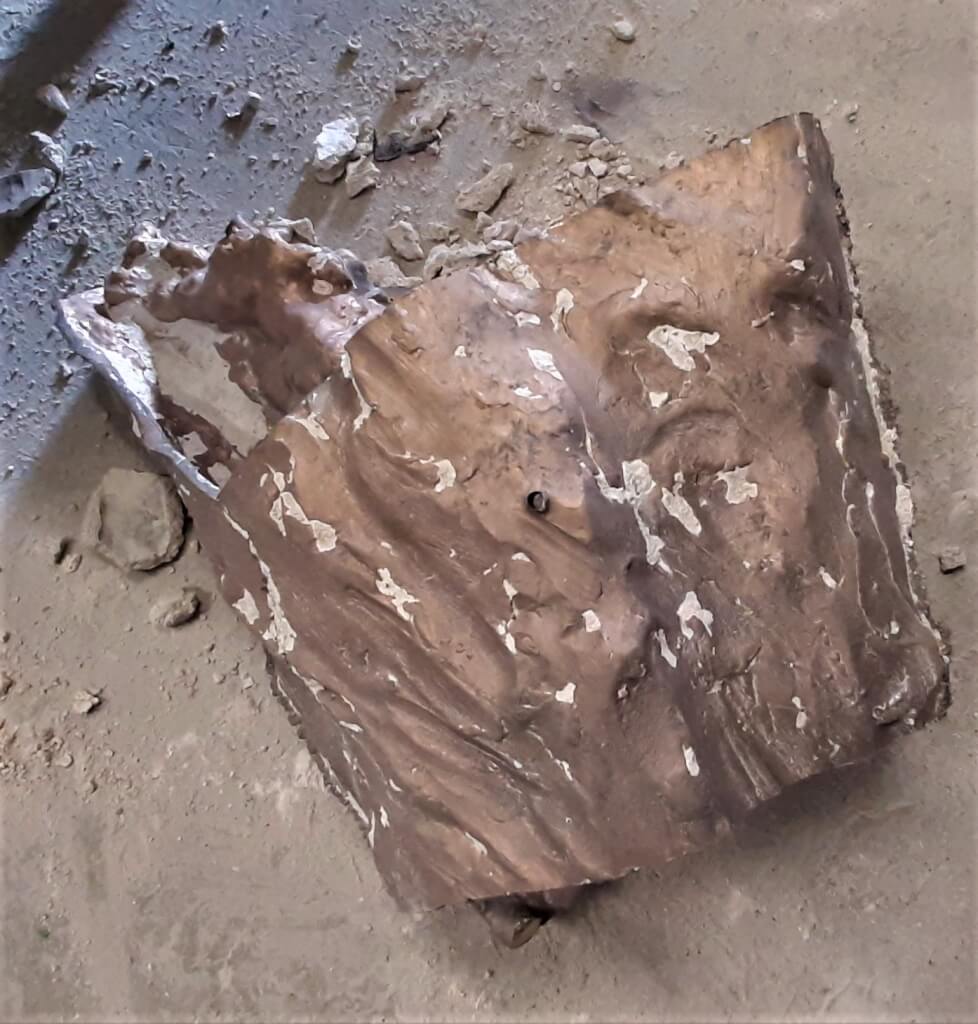
Here is a section of the skirt. It is resting on a workbench in the workshop and is flecked with bits of white investment material that are the remains of the mould in which it was cast. It is waiting to be cleaned which will remove those bits completely.
The left hand and forearm…
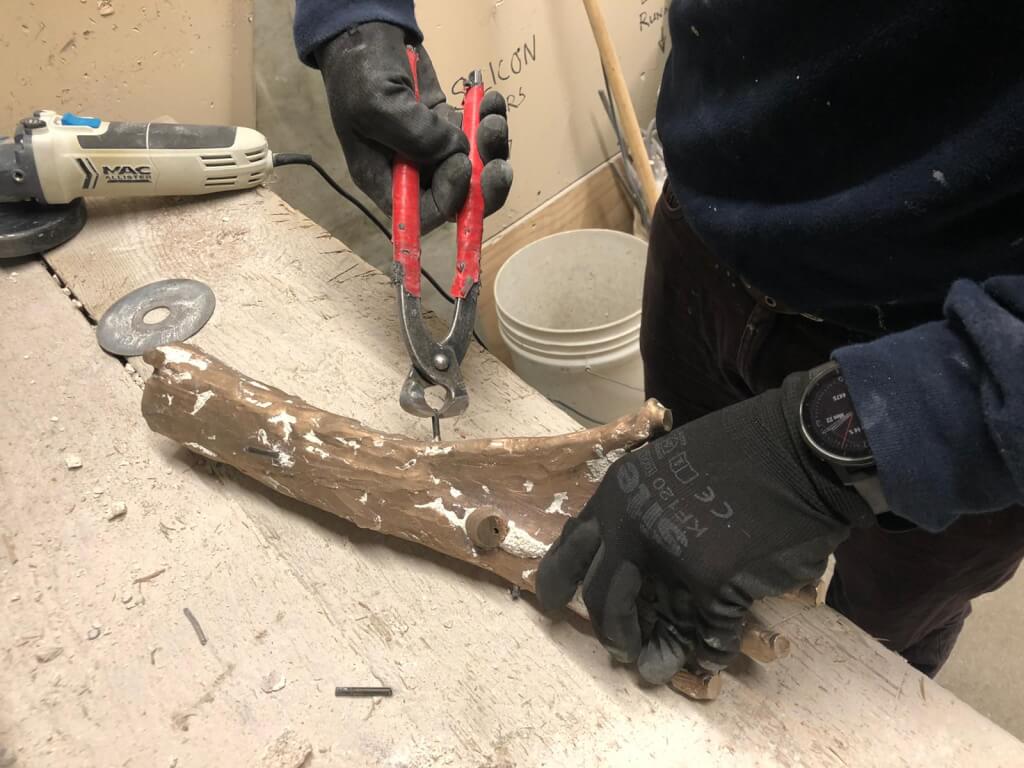
This is the casting of the left forearm and hand. The foundryman is removing one of the feeders or risers used during casting.
The upper torso, shoulders and top of the upper arms…
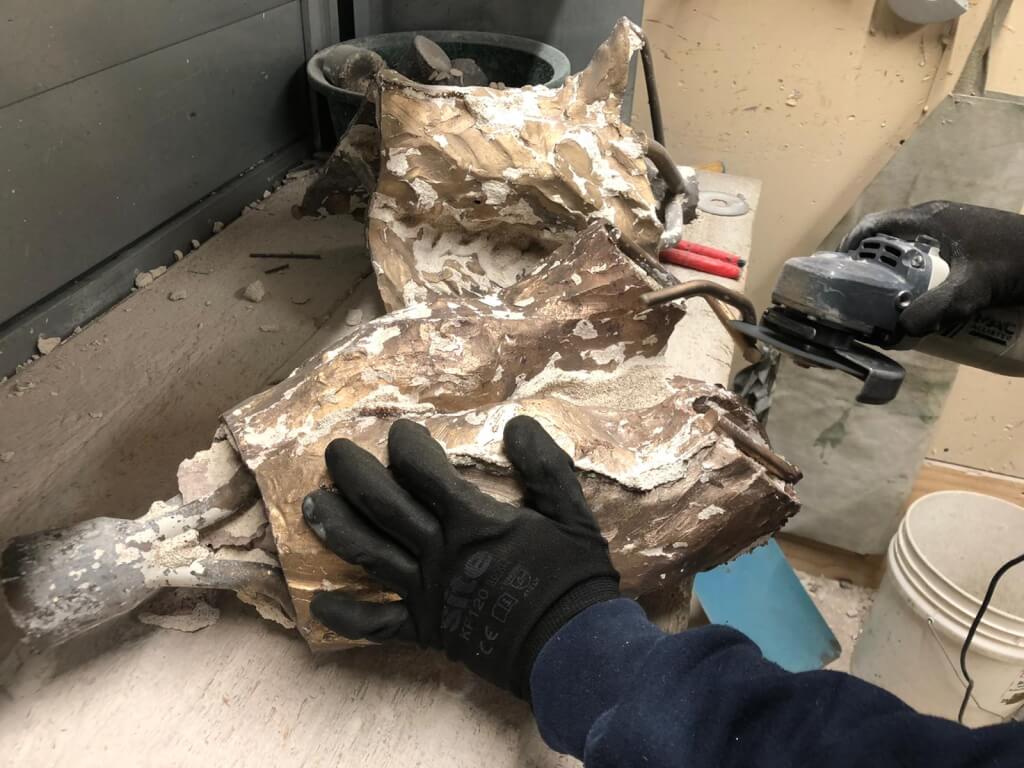
This casting is of the top of the torso and the tops of the upper arms. The foundryman is removing one of the runners or risers used during casting. The flecks are bits of white investment material from the mould. When he’s finished fettling (cutting off the unwanted pieces of bronze), he’ll clean them off as the next job. To the left of the picture are the pouring funnel and runners or feeders, still attached.
The Dove of Peace…
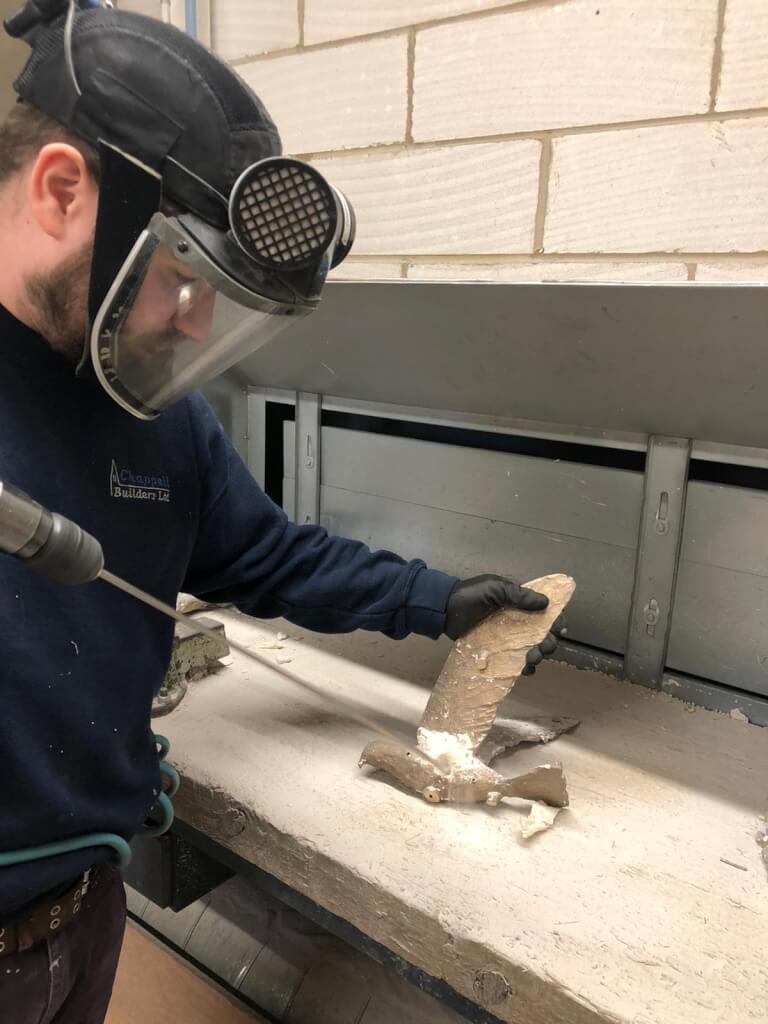
This is the Dove of Peace from the bronze sculpture. It is being cleaned after casting. It is resting on its right wing, with the underside of the left wing facing the camera.
The bottom of the wing, where it meets the body, looks white, while the rest of the casting is a golden bronze. The white is the remains of the investment plaster still sticking to the casting. The foundryman is cleaning the material off, using a drill with a suitably abrasive attachment on a long shaft.
The right hand and forearm…
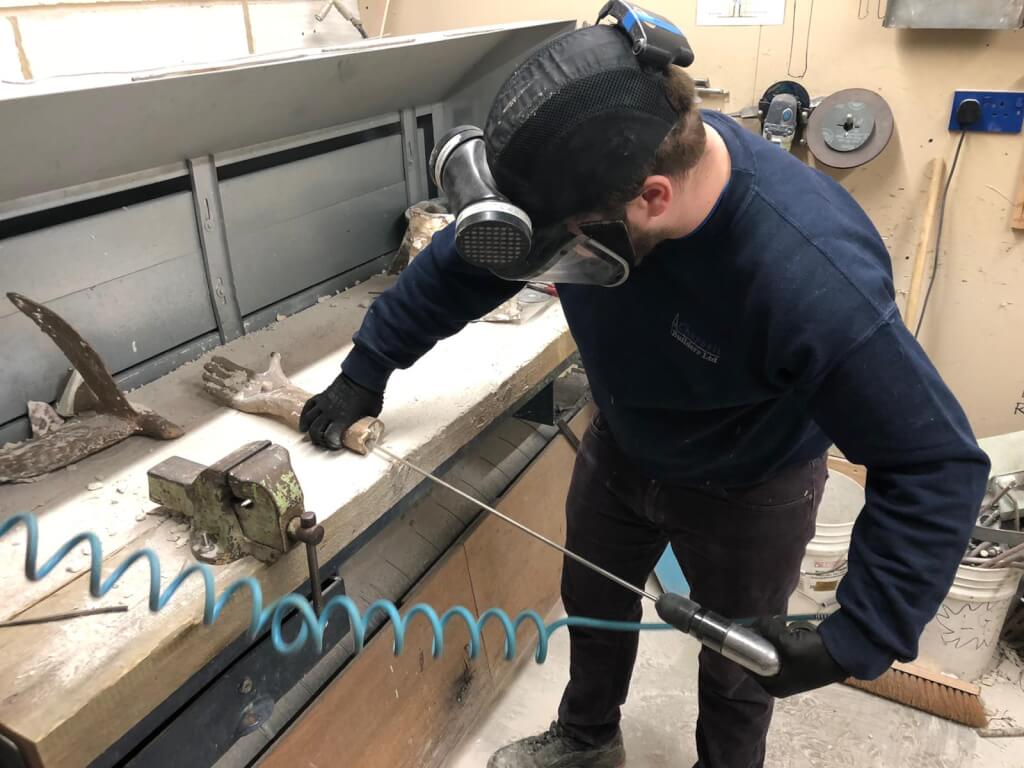
Here is the right hand and forearm of the bronze sculpture. It is being cleaned. The casting is resting horizontally and palm up. A foundryman is using a compressed-air drill to remove the investment plaster from the inside of the casting to prepare it for the next stage in the process.
A section of skirt…
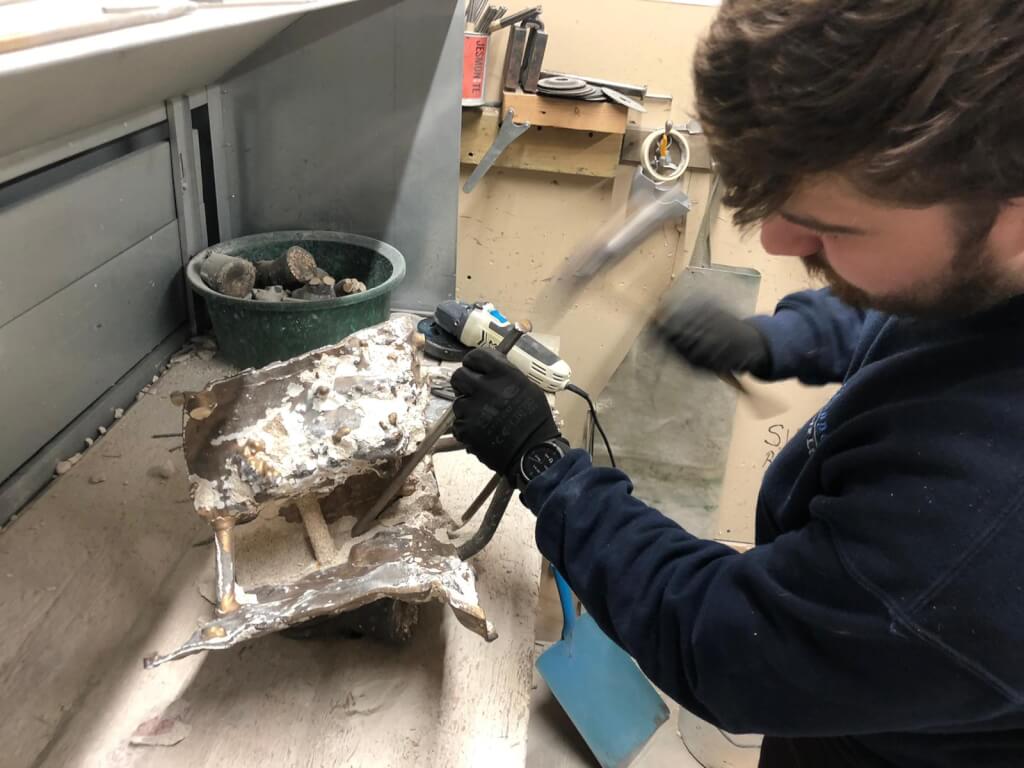
This is a foundryman removing internal bits of the mould left after casting. He is using a hammer and chisel to separate the bits of fine white investment material that remain. They all need to be removed, before the next stage. Behind the casting on the bench, in a large round green bowl, are pieces of castings used during casting itself, but no longer needed. They have been cut off to leave just the original sculpture shape.
All these waste pieces will be melted down and used again. It may not be gold or silver, but bronze is an expensive alloy and precious, so it is important not to waste it!
Lots of bits!
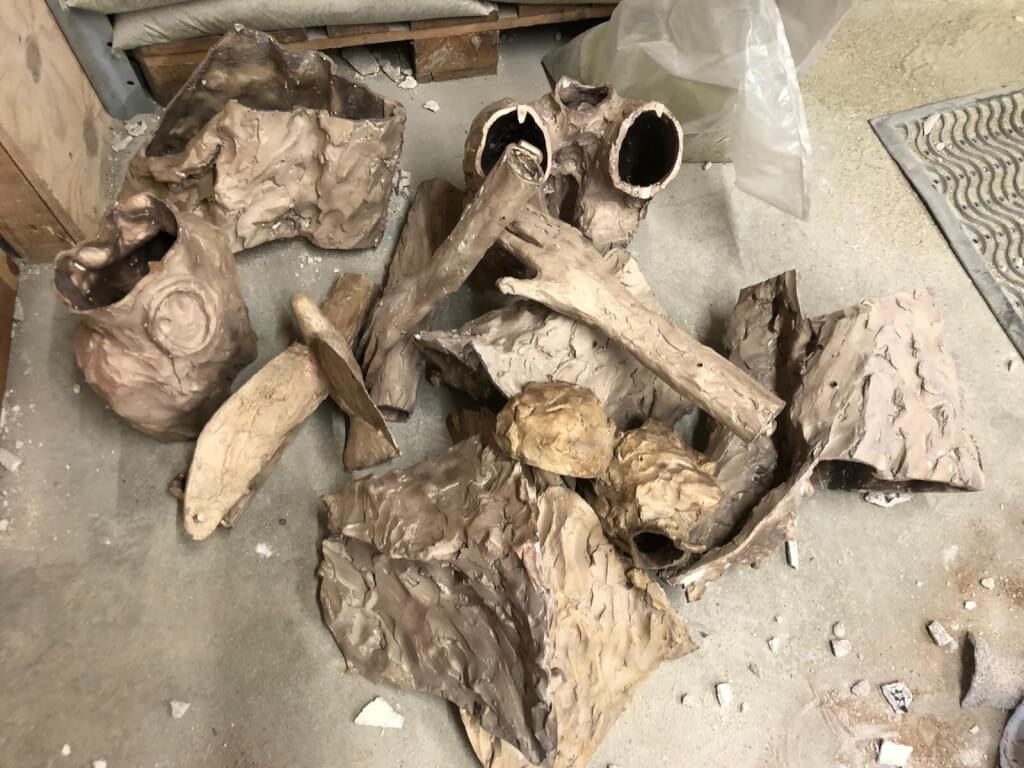
Here are some of the individual castings that go to make up the finished bronze sculpture. They are resting on the floor of the workshop in a jumbled pile. Some of the pieces are identifiable such as the hands, the dove, the waist and the upper torso and upper arms, but the rest are incomprehensible!
All of this work, and we still haven’t got a recognisable outline of the finished sculpture!
More as it happens!
See the finished Speak to us of Freedom sculpture here.
